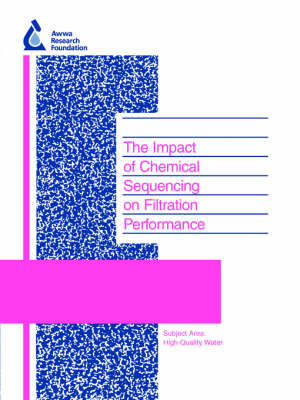The primary objective of this research was to understand the impact of chemical sequencing and coagulation pH/zeta potential on filtration performance. The secondary goal was to determine effective coagulation processes in terms of pH, zeta potential, and coagulant dose for treating challenging (i.e., runoff-type) raw waters. The following are highlights from this project: Use of high coagulation pH (approximately 7.5) provided more consistent filtration performance over a wider range of coagulation conditions than lower pH levels. Because higher pH significantly increases the optimum zeta potential range for filtration, a practical implication of this result is that use of a high coagulation pH process may be the most effective short-term treatment strategy for rapidly changing, runoff-type waters containing low alkalinity and high NOM levels. The photometric dispersion analyzer (PDA) appears to be a useful alternative to jar tests for determining optimum coagulant doses and quickly evaluating different coagulation scenarios. In terms of overall process performance, the use of relatively high coagulation pH conditions along with alum doses optimized by zeta potential appeared to offer several advantages: significantly improved particle removal in the settling process; increased floc formation rates; only slightly decreased TOC removal compared to lower pH levels; and a significantly wider operating range, in terms of zeta potential, for optimum filtration performance. Although filtration performance in general was improved at higher pH levels for both water sources, the effect was greater for the more challenging runoff water. Because higher pH significantly increases the optimum zeta potential range for filtration, a practical implication of this result is that use of a high coagulation pH process may be the most effective short-term treatment strategy for rapidly changing, runoff-type waters containing low alkalinity and high NOM levels. A high-pH process would not be practical, in terms of chemical feed costs and solids handling issues, for raw water that is effectively treated by conventional processes. If a high-pH process is unfeasible for treating runoff water, the zeta potential of coagulated water should be continuously monitored and the coagulant dose adjusted accordingly. Originally published by AwwaRF for its subscribers in 2003. This publication can also be purchased and downloaded via Pay Per View on Water Intelligence Online - click on the Pay Per View icon below
- ISBN10 184339863X
- ISBN13 9781843398639
- Publish Date 1 January 2004
- Publish Status Out of Print
- Out of Print 5 July 2021
- Publish Country GB
- Imprint IWA Publishing
- Format Paperback
- Pages 62
- Language English
